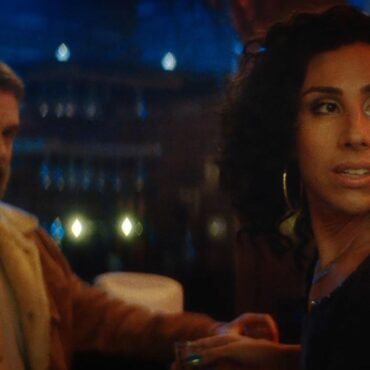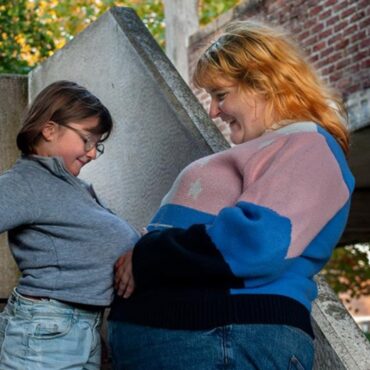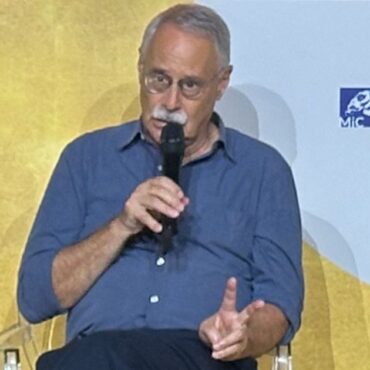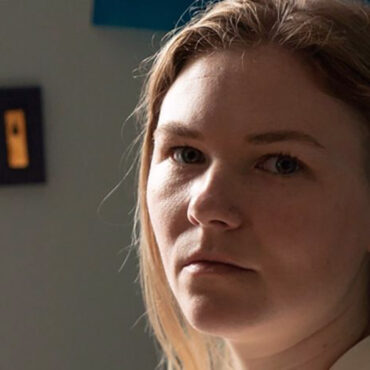This interview was conducted during the 78th Edinburgh International Film Festival, offering a unique opportunity to explore the profound themes and artistic choices behind “Mortician“. This film stands out for its boldness in addressing the realities of exile and resistance, shedding light on struggles often hidden from view and giving voice to those fighting for freedom from afar.
“Mortician” and the themes of exile and resistance
Abdolreza Kahani’s film “Mortician” explores the complex realities of exile and political resistance, weaving the stories of its characters into a compelling narrative that emphasizes resilience in the face of adversity. The film stars Golazin Ardestani, known as Gola—a singer and actress bringing her personal experience as an exiled artist—and Nima Sadr, whose performance as Mojdaba adds emotional depth and authenticity.
A protest from the heart of exile
“Mortician” is more than just a cinematic piece; it is a powerful act of defiance. Kahani, an Iranian director working outside his homeland and known for his oppositional cinema, delivers a bold work that confronts the shadows cast by exile—such as paranoia, surveillance, and internal conflict. Its premiere at Edinburgh marked an important moment, highlighting a film that challenges oppressive regimes and raises awareness of the struggles faced by persecuted individuals.
Featuring Nima Sadr, previously appreciated for his role in “A Shrine“, and Golazin Ardestani, whose poetic voice and personal history as an exiled singer lend profound authenticity, the film offers intense, measured performances. These actors bring to life complex, tormented characters caught between worlds and ideologies—each grappling with pain, hope, and the harsh realities of displacement.
The characters: Mojtaba and Jana
Mojtaba, played by Nima Sadr, is an Iranian expatriate living in Canada. His job—washing the bodies of the deceased according to Islamic tradition—is solitary and imbued with melancholy, forcing him to confront mortality and the fragile nature of life. His routine is disrupted when he encounters Jana, portrayed by Golazin Ardestani, an exiled protest singer persecuted by the regime in Iran. Jana’s request is heart-wrenching: she asks Mojtaba to wash her body after she executes her plan to end her life as a final act of protest.
Their interactions reveal themes of mortality, resistance, and emotional resilience. Abdolreza Kahani carefully creates a tense atmosphere, using visual elements such as foggy windows, mirrors, and close-ups of smartphone screens—symbols of surveillance and distrust—that underscore the pervasive paranoia in exile communities. Jana’s paranoia is palpable, and it begins to infect Mojtaba, pushing him to take precautions like deleting all his apps before meeting her, emphasizing the constant threat of surveillance.
Personal experience and artistic expression
Golazin Ardestani shares how she infused her role with her own personal experience as an artist living in exile. Working closely with Kahani, she aimed to raise awareness about the struggles faced by women and female singers in Iran. “We didn’t want Jana to become Gola, but the pain is the same. The reality of life is the same. The exile is the same, the rage is the same,” she explains. Her portrayal balances her own identity with the character’s despair, illustrating the universality of suffering under oppressive regimes.
Jana’s songs, composed by Ardestani herself, serve as powerful musical expressions of rebellion and hope. These performances deepen the film’s message: art remains a vital weapon of resistance, capable of inspiring change and conveying solidarity even in darkness.
The Dynamic of resistance and humanity
Throughout the film, the evolving relationship between Mojtaba and Jana reveals a profound human connection. Mojtaba’s gentle, passive nature contrasts sharply with Jana’s fiery spirit, creating a compelling dynamic. Despite their differences, they find comfort and validation in each other’s company. Kahani’s depiction of this relationship emphasizes that even wounded souls—scarred by exile and repression—can forge bonds that affirm their shared humanity and resilience.
According to Sadr, their struggles are reflective of the harsh realities faced daily by many Iranians. “Honestly, that’s almost a reality for our life. Most Iranian people, that it is happening every day to us,” he states. The continued threat from oppressive regimes, whether within Iran or among expatriates, shapes their perceptions of safety and freedom, revealing the pervasive reach of authoritarian control.
A Bold Ending and Acts of Creative Resistance
The film concludes with an intentionally abrupt and intense ending, fitting its somber tone. Rather than the traditional ending credits, Kahani presents a manifesto explaining his act of resistance: he shot the entire film alone, on a simple smartphone, refusing Iranian state funding. This act itself is a statement—an assertion of artistic independence and defiance in the face of repression. Kahani emphasizes that his mission is to create films that raise awareness and challenge injustice.
Kahani expresses that his role is to make films that raise awareness. Ardestani adds that the bond between Jana and Mojdaba is significant because it reveals that no one is truly safe under the current Iranian regime. “Even the person who is working for them, right? And I think that’s very interesting that at the end, we get to watch that.” Kahani’s film sheds light on the persecution faced by Iranians, even outside of Iran, and the challenges of being understood by those who have not lived this reality. Ardestani hopes that Mortician will bring awareness to audiences about what is happening beyond Iran’s borders and the reach of the Iranian regime.
Plot
A reclusive mortician faces an unusual request from a dissident singer in hiding, their bond providing the beating heart of this disarmingly elegant film. Combining a distinctive, lo-fi visual style, naturalistic performances and familiar wit and humanity, Kahani’s new film is utterly distinctive and affecting with a gut punch ending that will leave audiences reeling.








































